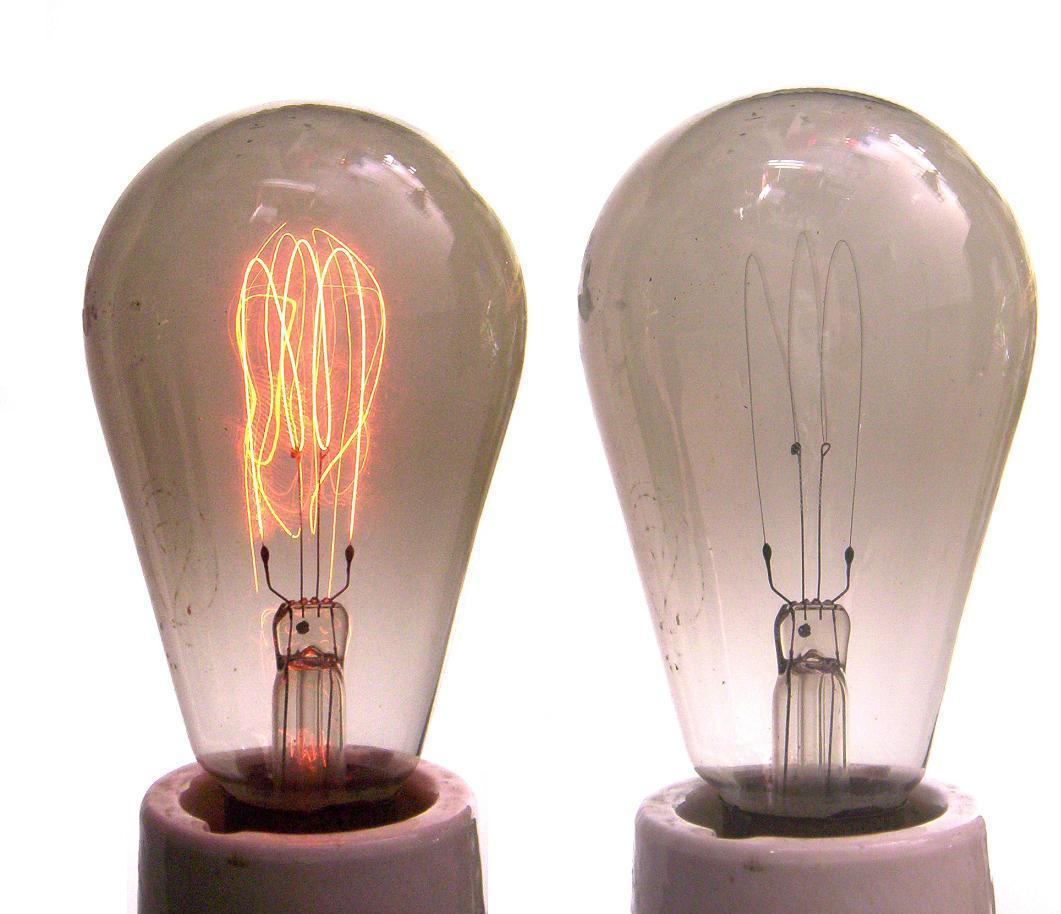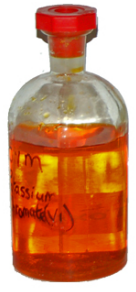|
Carbon Tissue
Carbon tissue is a gelatin-based emulsion used as a photoresist in the chemical etching (photoengraving) of gravure cylinders for printing. This was introduced by British physicist and chemist Joseph Swan in 1864. It has been used in photographic reproduction since the early days of photography. Carbon materials marketing began in 1866 by Joseph Swan which he subsequently sold to the Autotype Company in 1868. His ready-made tissues were in three colours black, sepia and purple-brown. This method was used in Europe and USA throughout the 19th century and well into the 20th. This market was almost closed in the 1950s although some companies produce small amount of carbon tissue and transfer papers for monochrome and three-color work until around 1990 Method The gelatinous emulsion is applied to a paper backing, and is rendered sensitive to light when immersed in a 3:4% solution of potassium bichromate. After drying, it is ready for use. The carbon tissue is first exposed to a ... [...More Info...] [...Related Items...] OR: [Wikipedia] [Google] [Baidu] |
Photoresist
A photoresist (also known simply as a resist) is a light-sensitive material used in several processes, such as photolithography and photoengraving, to form a patterned coating on a surface. This process is crucial in the electronic industry. The process begins by coating a substrate with a light-sensitive organic material. A patterned mask is then applied to the surface to block light, so that only unmasked regions of the material will be exposed to light. A solvent, called a developer, is then applied to the surface. In the case of a positive photoresist, the photo-sensitive material is degraded by light and the developer will dissolve away the regions that were exposed to light, leaving behind a coating where the mask was placed. In the case of a negative photoresist, the photosensitive material is strengthened (either polymerized or cross-linked) by light, and the developer will dissolve away only the regions that were not exposed to light, leaving behind a coating in areas ... [...More Info...] [...Related Items...] OR: [Wikipedia] [Google] [Baidu] |
Photoengraving
Photoengraving is a process that uses a light-sensitive photoresist applied to the surface to be engraved to create a mask that protects some areas during a subsequent operation which etches, dissolves, or otherwise removes some or all of the material from the unshielded areas of a substrate. Normally applied to metal, it can also be used on glass, plastic and other materials. A photoresist is selected which is resistant to the particular acid or other etching compound to be used. It may be a liquid applied by brushing, spraying, pouring or other means and then allowed to set, or it may come in sheet form and be applied by laminating. It is then exposed to light—usually strong ultraviolet (UV) light—through a photographic, mechanically printed, or manually created image or pattern on transparent film. Alternatively, a lens may be used to project an image directly onto it. Typically, the photoresist is hardened where it receives sufficient exposure to light, but some photores ... [...More Info...] [...Related Items...] OR: [Wikipedia] [Google] [Baidu] |
Rotogravure
Rotogravure (or gravure for short) is a type of intaglio printing process, which involves engraving the image onto an image carrier. In gravure printing, the image is engraved onto a cylinder because, like offset printing and flexography, it uses a rotary printing press. Once a staple of newspaper photo features, the rotogravure process is still used for commercial printing of magazines, postcards, and corrugated (cardboard) and other product packaging. History and development In the 19th century, a number of developments in photography allowed the production of photo-mechanical printing plates. W H Fox Talbot mentions in 1852 the use of a textile in the photographic process to create half-tones in the printing plate. A French patent in 1860 describes a reel-fed gravure press. A collaboration between Klic and Fawcett in Lancaster resulted in the founding of the Rembrandt Intaglio Printing Company in 1895, which company produced art prints. In 1906 they marketed the f ... [...More Info...] [...Related Items...] OR: [Wikipedia] [Google] [Baidu] |
United Kingdom
The United Kingdom of Great Britain and Northern Ireland, commonly known as the United Kingdom (UK) or Britain, is a country in Europe, off the north-western coast of the European mainland, continental mainland. It comprises England, Scotland, Wales and Northern Ireland. The United Kingdom includes the island of Great Britain, the north-eastern part of the island of Ireland, and many List of islands of the United Kingdom, smaller islands within the British Isles. Northern Ireland shares Republic of Ireland–United Kingdom border, a land border with the Republic of Ireland; otherwise, the United Kingdom is surrounded by the Atlantic Ocean, the North Sea, the English Channel, the Celtic Sea and the Irish Sea. The total area of the United Kingdom is , with an estimated 2020 population of more than 67 million people. The United Kingdom has evolved from a series of annexations, unions and separations of constituent countries over several hundred years. The Treaty of Union between ... [...More Info...] [...Related Items...] OR: [Wikipedia] [Google] [Baidu] |
Physicist
A physicist is a scientist who specializes in the field of physics, which encompasses the interactions of matter and energy at all length and time scales in the physical universe. Physicists generally are interested in the root or ultimate causes of phenomena, and usually frame their understanding in mathematical terms. Physicists work across a wide range of research fields, spanning all length scales: from sub-atomic and particle physics, through biological physics, to cosmological length scales encompassing the universe as a whole. The field generally includes two types of physicists: experimental physicists who specialize in the observation of natural phenomena and the development and analysis of experiments, and theoretical physicists who specialize in mathematical modeling of physical systems to rationalize, explain and predict natural phenomena. Physicists can apply their knowledge towards solving practical problems or to developing new technologies (also known as app ... [...More Info...] [...Related Items...] OR: [Wikipedia] [Google] [Baidu] |
Chemist
A chemist (from Greek ''chēm(ía)'' alchemy; replacing ''chymist'' from Medieval Latin ''alchemist'') is a scientist trained in the study of chemistry. Chemists study the composition of matter and its properties. Chemists carefully describe the properties they study in terms of quantities, with detail on the level of molecules and their component atoms. Chemists carefully measure substance proportions, chemical reaction rates, and other chemical properties. In Commonwealth English, pharmacists are often called chemists. Chemists use their knowledge to learn the composition and properties of unfamiliar substances, as well as to reproduce and synthesize large quantities of useful naturally occurring substances and create new artificial substances and useful processes. Chemists may specialize in any number of subdisciplines of chemistry. Materials scientists and metallurgists share much of the same education and skills with chemists. The work of chemists is often related to t ... [...More Info...] [...Related Items...] OR: [Wikipedia] [Google] [Baidu] |
Joseph Swan
Sir Joseph Wilson Swan FRS (31 October 1828 – 27 May 1914) was an English physicist, chemist, and inventor. He is known as an independent early developer of a successful incandescent light bulb, and is the person responsible for developing and supplying the first incandescent lights used to illuminate homes and public buildings, including the Savoy Theatre, London, in 1881. In 1904 Swan was knighted by King Edward VII, awarded the Royal Society's Hughes Medal, and was made an honorary member of the Pharmaceutical Society. He had received the highest decoration in France, the Legion of Honour, when he visited the 1881 International Exposition of Electricity, Paris. The exhibition included displays of his inventions, and the city was lit with his electric lighting. Early life Joseph Wilson Swan was born in 1828 at Pallion Hall in Pallion, in the Parish of Bishopwearmouth, Sunderland, County Durham. His parents were John Swan and Isabella Cameron.Davidson, Michael W., a ... [...More Info...] [...Related Items...] OR: [Wikipedia] [Google] [Baidu] |
Potassium Bichromate
Potassium dichromate, , is a common inorganic chemical reagent, most commonly used as an oxidizing agent in various laboratory and industrial applications. As with all hexavalent chromium compounds, it is acutely and chronically harmful to health. It is a crystalline ionic solid with a very bright, red-orange color. The salt is popular in the laboratory because it is not deliquescent, in contrast to the more industrially relevant salt sodium dichromate.Gerd Anger, Jost Halstenberg, Klaus Hochgeschwender, Christoph Scherhag, Ulrich Korallus, Herbert Knopf, Peter Schmidt, Manfred Ohlinger, "Chromium Compounds" in Ullmann's Encyclopedia of Industrial Chemistry, Wiley-VCH, Weinheim, 2005. Chemistry Production Potassium dichromate is usually prepared by the reaction of potassium chloride on sodium dichromate. Alternatively, it can be also obtained from potassium chromate by roasting chromite ore with potassium hydroxide. It is soluble in water and in the dissolution process it ... [...More Info...] [...Related Items...] OR: [Wikipedia] [Google] [Baidu] |
Ferric Chloride
Iron(III) chloride is the inorganic compound with the formula . Also called ferric chloride, it is a common compound of iron in the +3 oxidation state. The anhydrous compound is a crystalline solid with a melting point of 307.6 °C. The colour depends on the viewing angle: by reflected light the crystals appear dark green, but by transmitted light they appear purple-red. Structure and properties Anhydrous Anhydrous iron(III) chloride has the structure, with octahedral Fe(III) centres interconnected by two-coordinate chloride ligands. Iron(III) chloride has a relatively low melting point and boils at around 315 °C. The vapor consists of the dimer (like aluminium chloride) which increasingly dissociates into the monomeric (with D3h point group molecular symmetry) at higher temperature, in competition with its reversible decomposition to give iron(II) chloride and chlorine gas. Hydrates In addition to the anhydrous material, ferric chloride forms four hydrates ... [...More Info...] [...Related Items...] OR: [Wikipedia] [Google] [Baidu] |
Screen Printing
Screen printing is a printing technique where a mesh is used to transfer ink (or dye) onto a substrate, except in areas made impermeable to the ink by a blocking stencil. A blade or squeegee is moved across the screen to fill the open mesh apertures with ink, and a reverse stroke then causes the screen to touch the substrate momentarily along a line of contact. This causes the ink to wet the substrate and be pulled out of the mesh apertures as the screen springs back after the blade has passed. One colour is printed at a time, so several screens can be used to produce a multi-coloured image or design. Traditionally, silk was used in the process. Currently, synthetic threads are commonly used in the screen printing process. The most popular mesh in general use is made of polyester. There are special-use mesh materials of nylon and stainless steel available to the screen-printer. There are also different types of mesh size which will determine the outcome and look of the f ... [...More Info...] [...Related Items...] OR: [Wikipedia] [Google] [Baidu] |
Photographic Processes Dating From The 19th Century
Photography is the visual art, art, application, and practice of creating durable images by recording light, either electronically by means of an image sensor, or chemically by means of a light-sensitive material such as photographic film. It is employed in many fields of science, manufacturing (e.g., photolithography), and business, as well as its more direct uses for art, film and video production, recreational purposes, hobby, and Mass communication, mass communication. Typically, a Lens (optics), lens is used to focus (optics), focus the light reflected or emitted from objects into a real image on the light-sensitive surface inside a camera during a timed Exposure (photography), exposure. With an electronic image sensor, this produces an Charge-coupled device, electrical charge at each pixel, which is Image processing, electronically processed and stored in a Image file formats, digital image file for subsequent display or processing. The result with photographic emulsion is ... [...More Info...] [...Related Items...] OR: [Wikipedia] [Google] [Baidu] |







